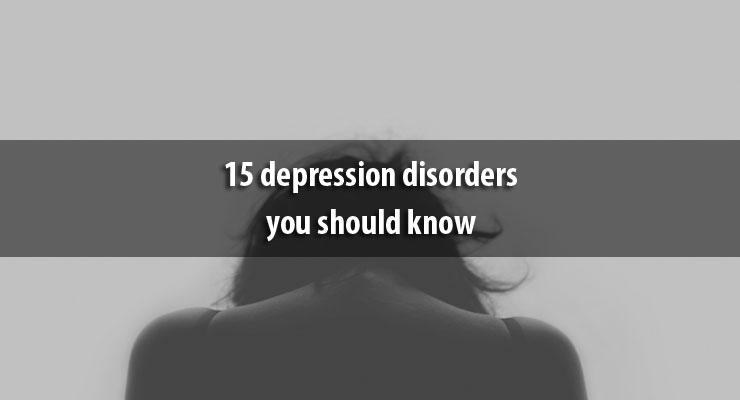Periods when you are feeling blue or sad are just part of life, and usually last a couple of days. Depression, on the other hand, lasts for longer periods, can interfere with daily life routines, and can adversely affect relationships in various ways.
Depression can manifest itself in various ways, including the following disorders:
Major disorders
1. Major depressive disorder
Also called major depression or clinical depression, it inhibits your ability to—or decrease your interest in—conducting regular life activities (like working, sleeping, studying, and eating). It can last all day, for nearly every day, for two weeks or longer.
2. Chronic depression
Major depression with a duration of at least 2 years.
3. Persistent depressive disorder
Also called PDD, dysthymic disorder, or dysthymia, its symptoms are less severe than major depression, but like chronic depression, these symptoms last for at least two years.
Other disorders
1. Agitated depression
Depression combines with high mental or physical energy, including restlessness, irritability, and insomnia.
2. Atypical depression
A temporary improvement in mood and other areas (like weight, restfulness, or emotional sensitivity).
3. Bipolar disorder
Also called manic-depressive illness, it combines periods of depression with periods of mania or elation.
4. Catatonic depression
An extended period of depression when a person neither speaks, moves, or both. It includes at least 2 of the following:
- Lost voluntary movement (or an inability to react to one’s environment)
- Too much movement (without purpose)
- Opposition to instructions/suggestions
- Weird voluntary movements, mannerisms, expressions or postures
- Involuntary repetition of another’s words or movements, without any meaning
5. Double depression
Combines dysthymia and major depression combined. For example, a person never fully returns to normal between bouts of major depression.
6. Endogenous depression
Depression that arises without logical causes.
7. Melancholic depression
When a person either does’’t find pleasure in positive things or their mood does not improve in response to positive events. They must also have 3 of the following:
- Depression that differs from grief or loss
- Significant loss of weight or appetite
- Deficiency in conscious movement
- Waking up too early in the morning
- Excessive guilt
- A mood that is worse in the morning
8. Postpartum depression
This depression is felt by 10–13% of women after childbirth, and it’s often due to hormonal or physical changes. In these cases, women feel very overwhelmed as a new mother.
9. Premenstrual dysphoric disorder (PMDD)
Women experiencing depression when their period starts. They may also be moody, irritable, anxious, tired, hungry, not hungry, unfocused, or feeling overwhelmed.
10. Psychotic depression
Severe depression accompanied by hallucinations, paranoia, or delusions.
11. Seasonal affective disorder (SAD)
Depression that generally occurs during changes in the amount of natural sunlight (usually, but not exclusively, October through April).
12. Situational depression
Sometimes called reactive depression, it typically arises as a result of a stressful situation or event (like a job loss, divorce, or death). Symptoms generally exist between 3–6 months after the event.
You can get relief from depression. In fact, many depression sufferers go on to live symptom-free or maintain considerable control over their condition. If you feel pharmaceuticals aren’t for you, EMPowerplus Advanced, combined with other healthy lifestyle changes, may be the answer. Learn more about how EMPowerplus Advanced can help.

